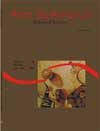Meiotic instability in invader plants of signal grass <em>Brachiaria decumbens</em> Stapf (Gramineae)
Abstract
Brachiaria decumbens is a tropical grass, native of the African savannas, with a narrow natural distribution. On the other hand, B. decumbens cv. Basilisk is a perennial forage grass widely used for pasture in the tropics. This cultivar was introduced in Australia in 1930 and thence to Brazil in the 60s. Although it covers millions of hectares in the country, it is considered a weed outside the pasture environment. Invader plants of B. decumbens, probably of the cultivar Basilisk, were collected on the grounds of the State University of Maringá, PR, and cytologically analyzed. Meiotic abnormalities were recorded with great frequency, some of which had been previously reported neither for B. decumbens nor for other Brachiaria species. Among the irregularities, abnormal chromosome segregation, desynapsis, chromosome stickiness and fusional syncytes were reported. The influence of the meiotic instability in causing pollen sterility is discussedDownloads
Download data is not yet available.
Published
2008-05-09
How to Cite
Bonato, A. B. M., Pagliarini, M. S., Silva, N. da, & Valle, C. B. do. (2008). Meiotic instability in invader plants of signal grass <em>Brachiaria decumbens</em> Stapf (Gramineae). Acta Scientiarum. Biological Sciences, 23, 619-625. https://doi.org/10.4025/actascibiolsci.v23i0.2720
Issue
Section
Biology Sciences
DECLARATION OF ORIGINALITY AND COPYRIGHTS
I Declare that current article is original and has not been submitted for publication, in part or in whole, to any other national or international journal.
The copyrights belong exclusively to the authors. Published content is licensed under Creative Commons Attribution 4.0 (CC BY 4.0) guidelines, which allows sharing (copy and distribution of the material in any medium or format) and adaptation (remix, transform, and build upon the material) for any purpose, even commercially, under the terms of attribution.
Read this link for further information on how to use CC BY 4.0 properly.
0.6
2019CiteScore
31st percentile
Powered by 

0.6
2019CiteScore
31st percentile
Powered by 











1.png)




3.png)













